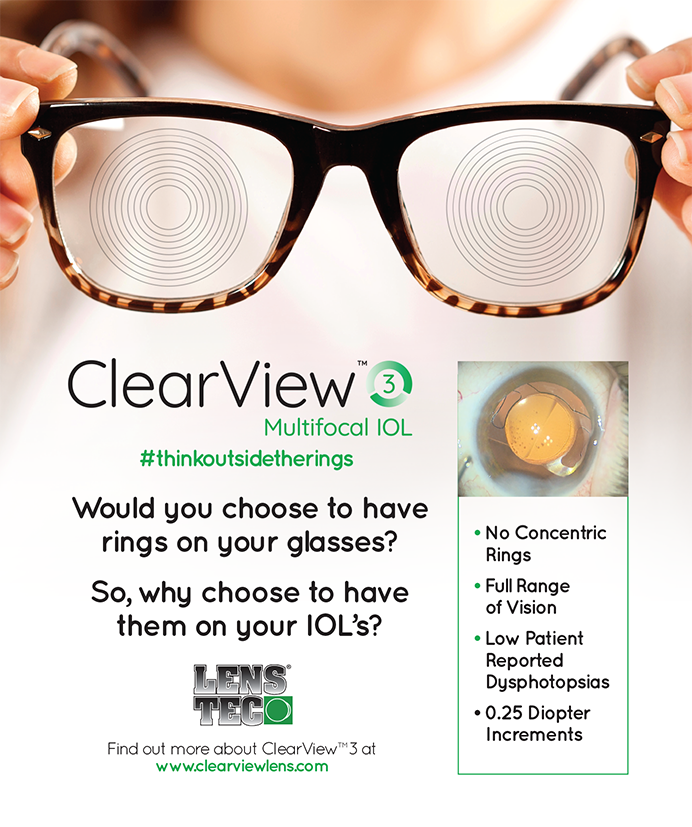To the ophthalmologist, one of the most positive aspects of LASIK surgery is that there are so many people who could benefit from the procedure, a number approaching one-half of the total population. It's a big number, and it has become a great source of frustration for providers who wonder why more people don't elect to undergo the procedure. There are many answers to this question, but let's limit this discussion to one factor that you can control: a lack of targeting.
First, we should try to characterize the problem. Because LASIK can help ?just about everybody? who wears corrective lenses, most providers have taken this product promise and carried it forward into their marketing and patient communication efforts. The problem is that most messages are aimed at every potential patient, and when striving to appeal to everyone, you usually end up appealing to no one at all.
Any LASIK provider who has created an advertisement has a sense of what happens when trying to appeal to the masses. They ask themselves at the outset, “Who am I trying to reach?” and “What am I trying to tell them?” Because the potential market is massive and because external marketing is expensive, the tendency thus far has been to try to save money by making the message appeal to a wider audience. This is a big mistake.
THINK SMALL
The goal should be to generate a specific message that will appeal to an equally specific target audience. When targeting, think small. Then think even smaller. This may seem counterintuitive, but the evidence suggests that messages that appeal to lifestyle (water skiing), emotion (couple gazing longingly at each other), or convenience (tossing contact lens equipment in the wastebasket), are still too broad, especially when placed in expensive media such as TV, radio, or print. Typical LASIK advertising efforts tend to rely on the buckshot approach: firing the rifle and hoping that somewhere in that wide-ranging target they actually hit something. Targeting means putting down the buckshot rifle and picking up a laser-beam scope to select very specific objects.
By refining the target in the early examples, you could be: (1) placing an ad in the local water skiing club newsletter, (2) setting up a booth at the spring bridal show, (3) sending a direct-mail letter to a key optometric colleague's failed contact lens patients.
These approaches are the opposite of “buckshot.” They are also more affordable, more manageable, and more effective at hitting the target.FOCUS YOUR MESSAGE
Yes, we're talking about smaller pools of potential candidates, and it seems risky to spend time and money targeting such a narrow audience. But your message can be tailored specifically to these candidates so that a much higher percentage of that audience begins to consider that LASIK might be ?right for me.?
Targeting is the key first step in doing what's known as relationship marketing or niche marketing. You are indeed trying to develop a relationship with each person that comes across your path who is actively considering the procedure. It is at that intersection where you, the provider, have the opportunity to begin building a relationship and exchanging information (about their needs and your ability to fulfill them) in a way that builds trust and reduces fear. The point is that you cannot try to reach or build relationships with everybody. You must narrow the focus, and it begins with trying to reach an audience that is distinct, definable, and different from everybody else.
SACRIFICE
As you begin to narrow the focus to a specific group, you will be forced to sacrifice everybody else. You can and should target different audiences, but each one involves a similar sacrifice. Tailor the message to that audience and search for the best way to reach that group. This segmenting process means understanding the hot button(s) that are likely to gain the interest of your target. For example, attract the water skier by focusing on the ability afforded by LASIK to move at high speed without the anxiety of losing a contact lens and/or not being able to see what's ahead. For the young bride-to-be, evoke the image of approaching the altar without the embarrassment of bloodshot eyes from an irritating contact lens. And you can help the ?contact lens dropout? to finally realize his or her dream of reducing dependence on glasses to see the world. Hot buttons are different for each individual, but you can often find similar themes relative to a specific hobby, profession, or life event.
REACH OUT
Targeting also requires an outreach effort, as opposed to simply welcoming what comes in through word-of-mouth referrals. Reaching out means understanding your customer and looking for opportunities to connect with others in their sphere of influence. It's a process of inquiry that requires skilled conversation to get beyond typical questions and answers: (Q: Why did you have LASIK? A: Because my glasses were a hassle.) You need to dig deeper in order to uncover effective messages for different target audiences. To date, the process has operated in reverse: a physician treats a certain individual who goes back and tells others like them (coworkers, for instance, or those who share the same hobbies), and those people see that surgeon for LASIK. Reaping the benefit of word-of-mouth is great, but shouldn't be thought of as targeting.
The big targeting mistake has already been made: the specific message of ?low price? failed to sufficiently attract the too-big-a-target group of ?everybody.? Clearly, low price has not reduced high fear. Low price may have a place with a target population, but I believe its time has not come. For the foreseeable future, providers will need to do a better job understanding their multiple audiences and putting their energy into reaching them in unique and meaningful ways.
Living hand-in-hand with targeting is the topic of differentiation. If targeting is about “who should I try to reach?” then differentiation asks the question, “Why should someone choose me?” Next month, we'll look at the difficulty that providers experience differentiating their refractive surgery offerings, and how that has hurt growth in overall procedure volumes.
Shareef Mahdavi is a business consultant focused on helping clients improve their marketing. He formerly was the head of marketing for VISX and is based in Pleasanton, California. Mr. Mahdavi may be reached at (925) 425-9963; shareef@SM2consulting.com

